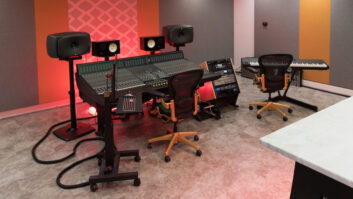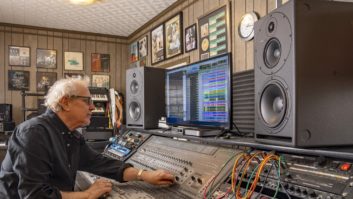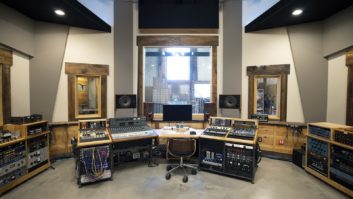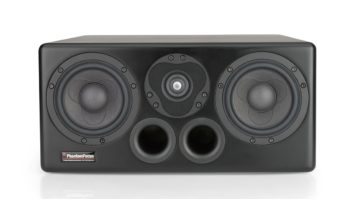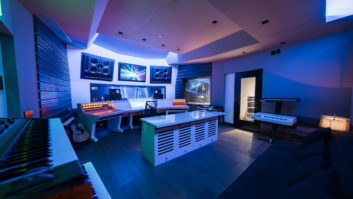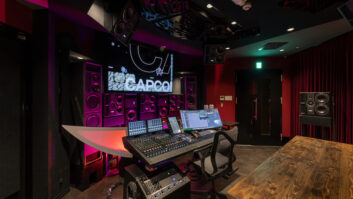No product category in professional audio presents a wider range of product, and a seemingly narrow range of preference among users, than studio monitors. Except maybe microphones, which makes sense, as the are both transducers, sitting at the beginning and the end of the hybrid analog-digital-analog chain. Speakers are subjective, and engineers rely heavily on their monitors in making decisions that affect the mix. If you can’t rely on what you’re hearing, and have confidence in how others will hear it on other systems, then you might want to check your room, or try out some new monitors.
The range? There are active and passive models, 4-inch woofers up to 15 inches in a soffit; aluminum, magnesium, beryllium; silk-dome tweeters, soft-dome tweeters and compression drivers. There are 2-way and 3-way and now 2.5-way systems, with and without subs. There are desktop models to sit beside a laptop. Nearly all models include some type of digital signal processing to “read the room” they reside in and allow the user to tailor EQ curves to individual situations. There are models below that come in at $399 each, on up to $12,000 for a pair. It’s all about taste. There is certainly a model out there to suit even the most discriminating engineer.
All that is to say that there is no defined category for this year’s studio monitor roundup. While the 1990s and early 2000s were dominated by nearfield monitor introductions, followed by a short boom in mains, followed by a short boom in desktop models, this year saw a wide range of introductions. A few high-end manufacturers, namely ADAM and PMC, have brought out entry-level models featuring high-end technologies to introduce the next generation of users to the “family.” Still others, like the Kii Threes, are brand new to the U.S.
It’s hard to pin down any marketwide developments in pro audio speakers as we approach the midpoint of 2018. What follows are a few that came through our offices or caught the ears of our reviewers,
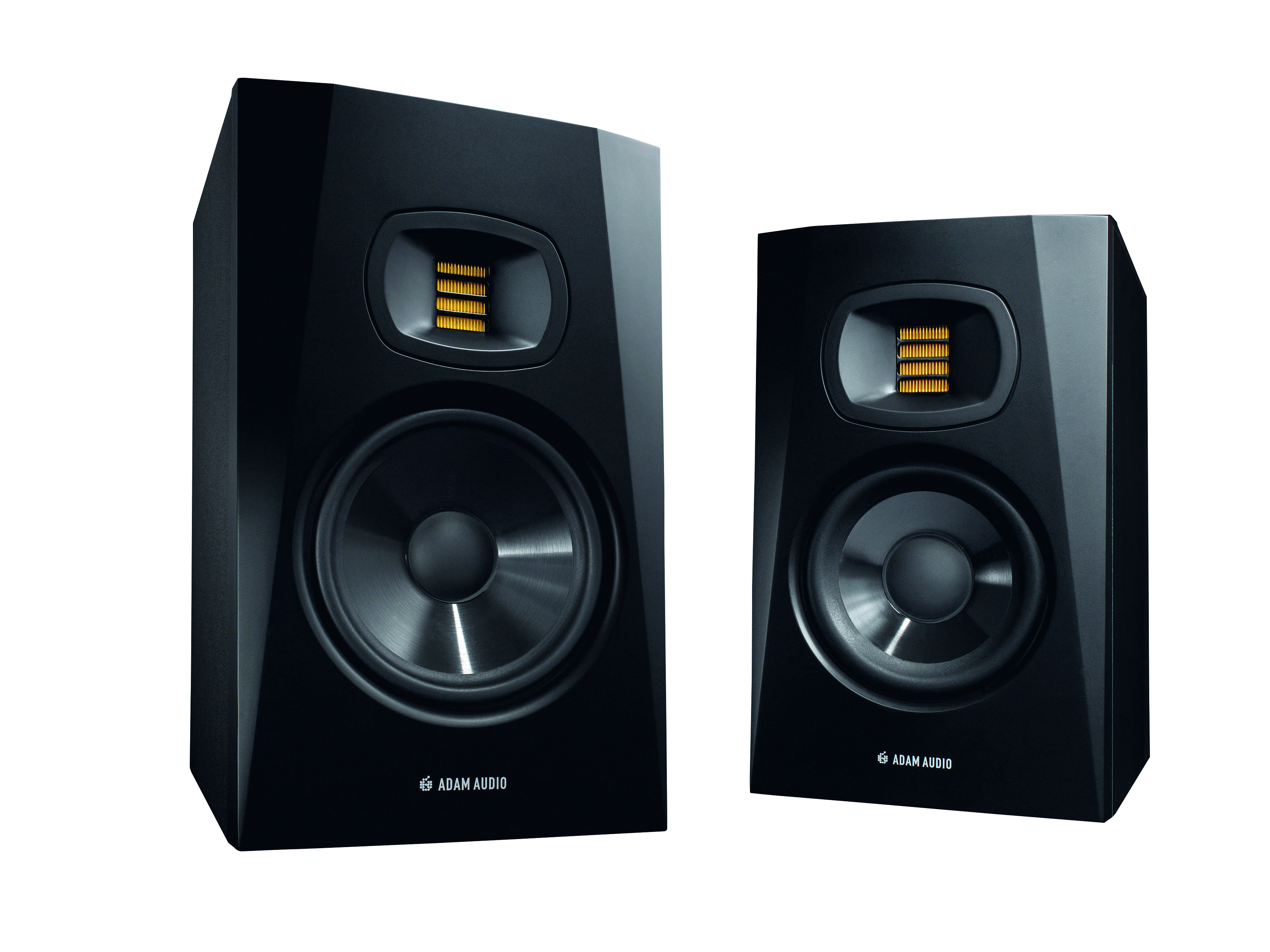
ADAM Audio T Series
Featuring trickled-down tech from the company’s higher-end models, ADAM’s T Series includes the T5V ($199) featuring a 5-inch woofer and the T7V ($249) with a 7-inch woofer. Both use the same U-ART (Unique Accelerated Ribbon Tweeter) high-frequency driver and offer a beveled cabinet design, rear-firing bass reflex port, built-in DSP-controlled driver crossovers and EQ, plus XLR/RCA analog connections. Boasting high dynamic range, wide frequency response, a wide sweet spot, and excellent transient response, the T5V and T7 are compatible with the ADAM Sub7 and Sub8 subwoofers.
Related: ADAM Audio Debuts T Series Monitors, Feb. 1, 2018
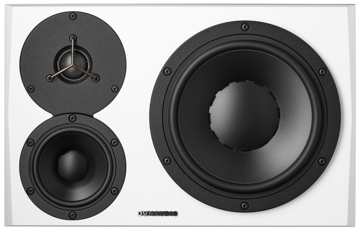
Dynaudio LYD 48
Dynaudio’s latest pro monitor line is the LYD Series of compact studio monitors. Three different two-ways, varying in their woofer size, serve as the foundation of the fleet, but the latest offering, the LYD 48, is the first three-way. This new model boasts an 8-inch magnesium silicate polymer woofer, 4-inch MSP midrange driver and a silk-dome tweeter. All of the LYD monitors feature DSP crossovers, a nice complement of DSP-based tone-shaping controls, and discrete amplifiers for each driver. The LYD 48s are housed in one of the smallest enclosures you’ll see for a three-way, which makes placement easy, even in smaller spaces. On the back of the speaker, an XLR connector provides a balanced input; unbalanced signals can be accepted through an RCA connector. All incoming signals are converted at 24-bit/96 kHz resolution to feed the EQ and crossover components, before being converted back to the amplifiers for reproduction.
Related: Review: Dynaudio LYD 48 Studio Monitor, by Brandon T. Hickey, Jan. 5, 2018
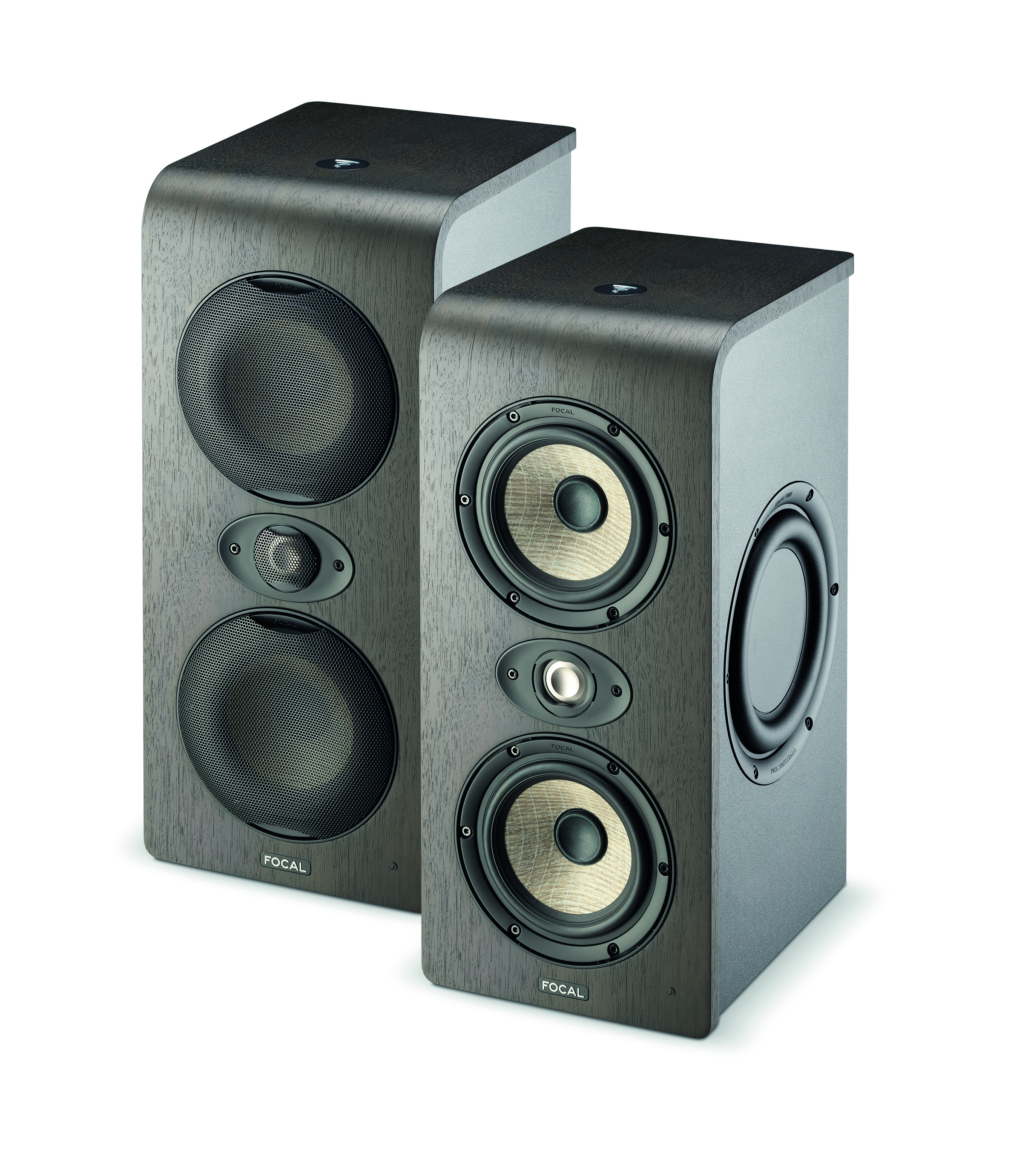
Focal Shape Twin
It was little more than a year ago that Focal introduced the Shape 40, 50 and 60, and at the January NAMM Show the company came out with its flagship in the line, The Shape Twin ($1,099 each, street). Designed to combine a unique 2.5-way compact design, extended LF response and comfortable positioning (they can be placed close to a wall), the Shape Twins feature Class AB amplification powering two 5-inch woofers (the woofer in the lower section of the cabinet is used for the 40-180 Hz range, whereas the second transducer is dedicated to frequencies between 40 Hz and 2.5 kHz), an improved aluminum/magnesium inverted dome tweeter, and a unique 8-inch double passive radiator. Optimized for small rooms and featuring a host of settings, the Shape Twin adds a comb filter for high and low frequencies (HF: ±3 dB from 4.5 kHz; LF ±6 dB above 250 Hz). The front and top of the MDF cabinets are finished with an authentic, natural stained, walnut veneer. The curved shape of the top of each loudspeaker was calculated specifically for each monitor in order to ensure a linear frequency response in the high end.
Related: Focal Expands Monitor Range with Shape Twin, Feb. 8, 2018
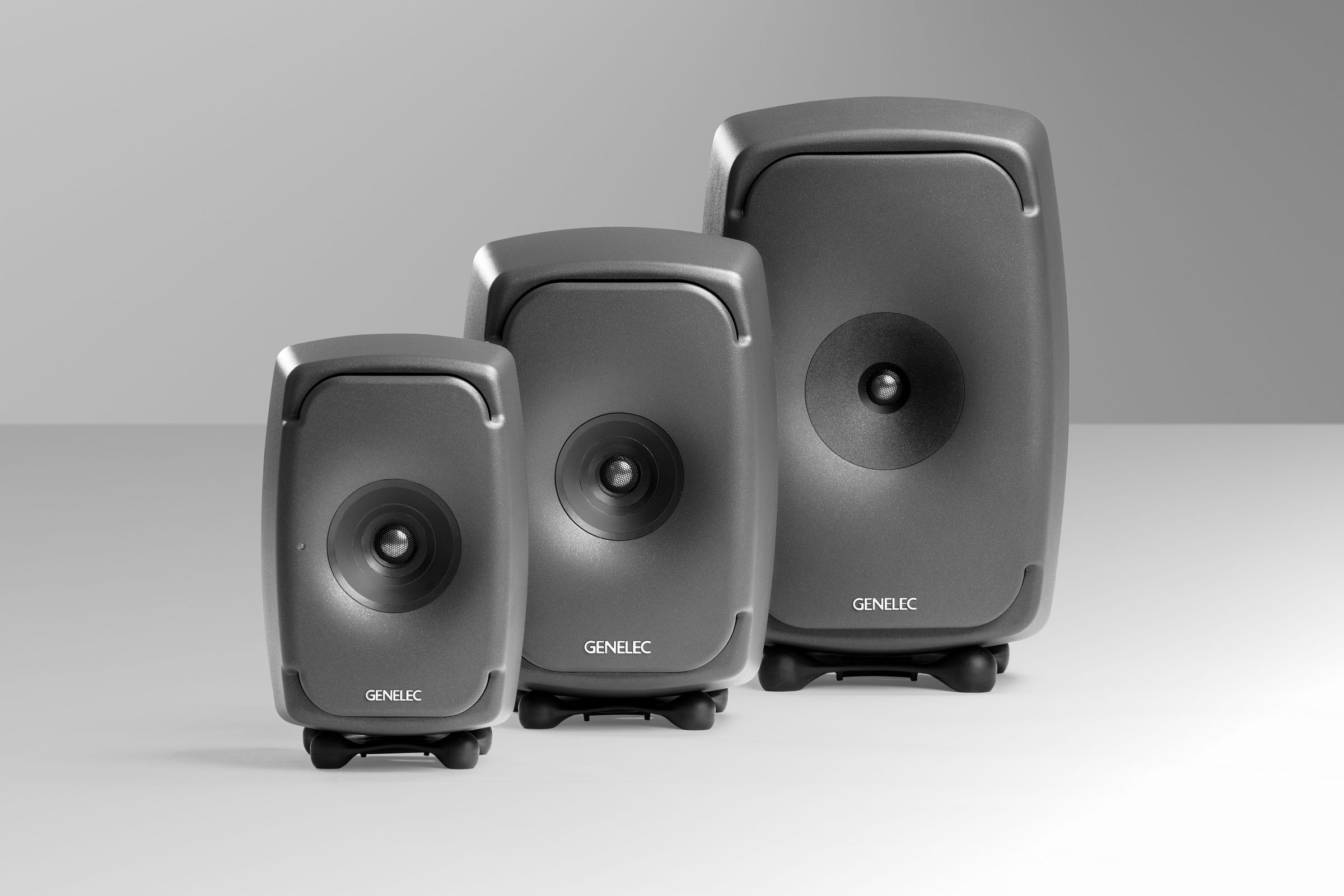
Genelec The Ones
Last month, Genelec announced the expansion of its Ultimate Point Source monitoring with “The Ones,” a series featuring the award-winning 8351A three-way Smart Active Monitor now joined by the new 8341A and 8331A, the world’s smallest three-way coaxial monitors, housed in enclosures no larger than a traditional two-way Genelec 8040 or 8030. The new models feature the company’s Directivity Controlled Waveguide; a unique midrange coaxial driver cone composed of concentric sections to optimize midrange linearity; and three stages of dedicated Class D amplification. The short-term maximum output is 110 dB SPL for the 8341A (at 1m), and 104 dB SPL for the 8331A, with accuracy better than ±1.5 dB, and respective frequency responses starting at 45 Hz and 38 Hz (-6 dB) and extending beyond 40 kHz both for the analog and digital inputs. All models include Smart Active Monitoring, incorporating the company’s unique Genelec Loudspeaker Manager 3.0 software for PC and Mac, incorporating AutoCal.
Related:
• Genelec Announces The Ones Series of Compact Coaxial Active Monitors, May 10, 2017
• Genelec 8331 and 8341, The Ones Compact Coaxial Monitors, Receive Technical Excellence and Creativity (TEC) Award, March 27, 2018
• Mix Engineer/Producer Richard Chycki Chooses Genelec The Ones for 5.1 Surround Mix of The Tragically Hip—A National Celebration, Dec. 27, 2017
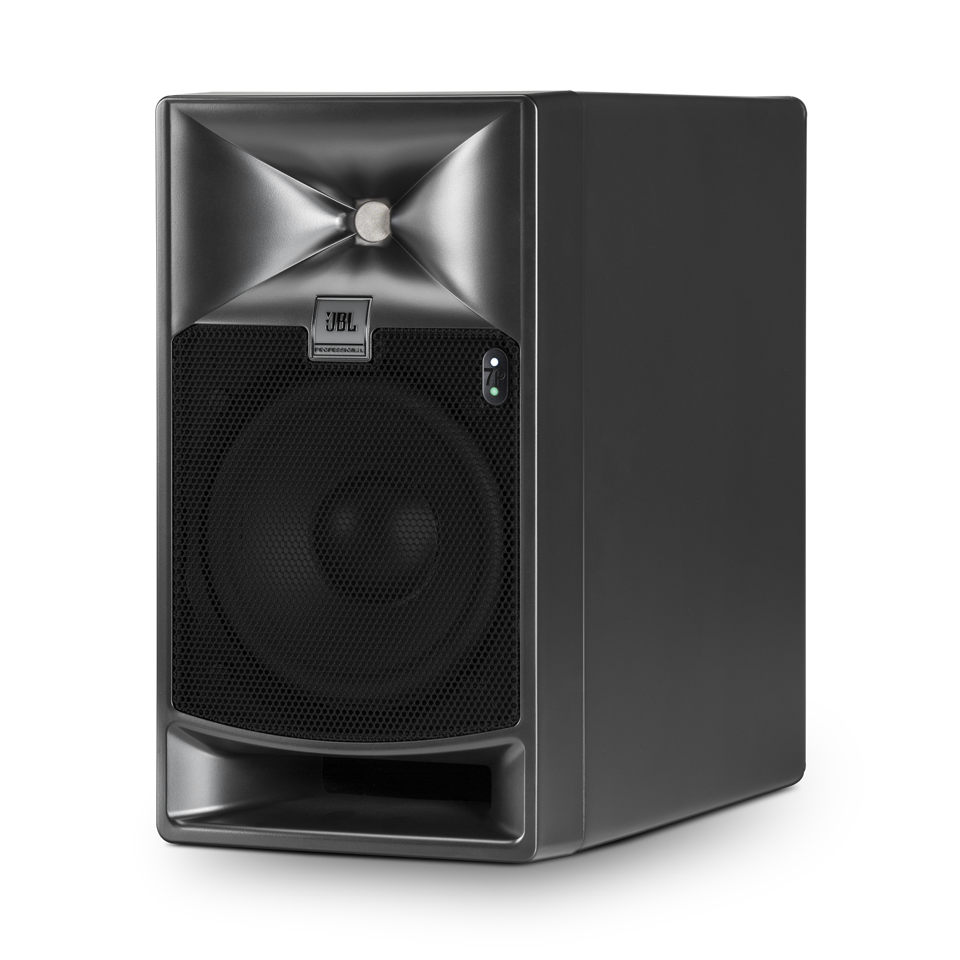
JBL 705P Master Reference Monitors
JBL’s 7 Series takes advantage of technology developed for the company’s flagship M2 Master Reference Monitor—including the patented Image Control Waveguide and proprietary transducers designed for increased output and extended LF response—and comes in at a much more accessible price. The 705P employs a 5-inch low-frequency driver, while its sibling the 708 uses an 8-inch driver. Both are Class D–biamped with 250 watts per driver. The rear panel of the 705P features balanced XLR analog and AES3 digital inputs, an AES3 thru connection, HiQnet port, and an IEC power inlet. An LCD screen displays system information, and a data wheel with a concentric Enter key, plus Back and Menu keys. There are extensive DSP options, including user EQ (high and low-shelf plus four bands of parametric EQ), room EQ, factory and user EQ presets, variable HPF (60, 70, 80, 100 or 120 Hz), frame (A/V sync) delay, room delay, analog input trim, and AES level trim. The birch-ply cabinet is compact, heavy and solid, and almost twice as deep as it is wide—no doubt contributing to its ability to generate low end.
Related:
• Review: JBL 705P Master Reference Monitors, by Steve La Cerra, April 2, 2018
• JBL Professional by HARMAN Introduces 7 Series Powered Master Reference Monitors, Jan. 19, 2017
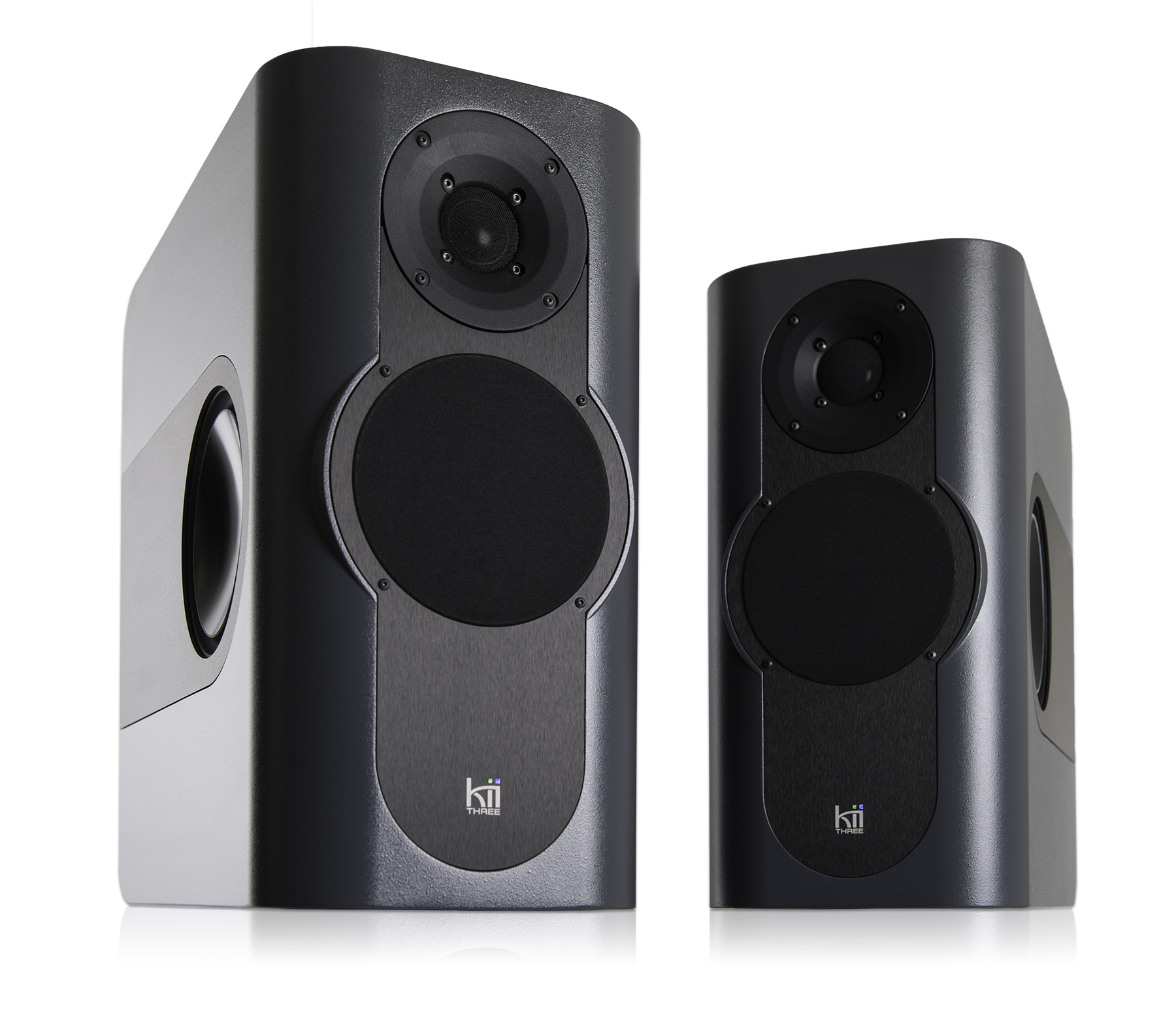
Kii Three
The Kii Three high-end reference nearfield is relatively new to the U.S., with distribution picked up by Grace Designs. And the reviews have been glowing. The Kii Threes use six total drivers, arrayed across four surfaces of the cabinet. The front surface features rounded left and right corners but is sculpted to flare out, framing the front-panel midrange driver. A brushed aluminum panel serves as the mounting point for this 5-inch component, which is covered by a cloth grille. A large waveguide is also attached to this panel, at the center of which sits the 1-inch tweeter, guarded by a fine-mesh metal grille. The left and right side panels each feature identical, exposed, 6.5-inch woofers. Two more 6.5-inch woofers, matched to the side-mounted pair, run vertically down the back panel. Each component is driven by its own 250-watt, Class D amplifier. The back panel includes Kii a single XLR connector that can be used for analog or AES/EBU input signal, as well as a pair of RJ45 (Ethernet) connectors for linking Kii monitors and controllers. Each weighs 33 pounds and is 16 inches deep, so pull up your heavy stands.
Related: Review: Kii Three Studio Monitors, by Brandon T. Hickey, April 3, 2018
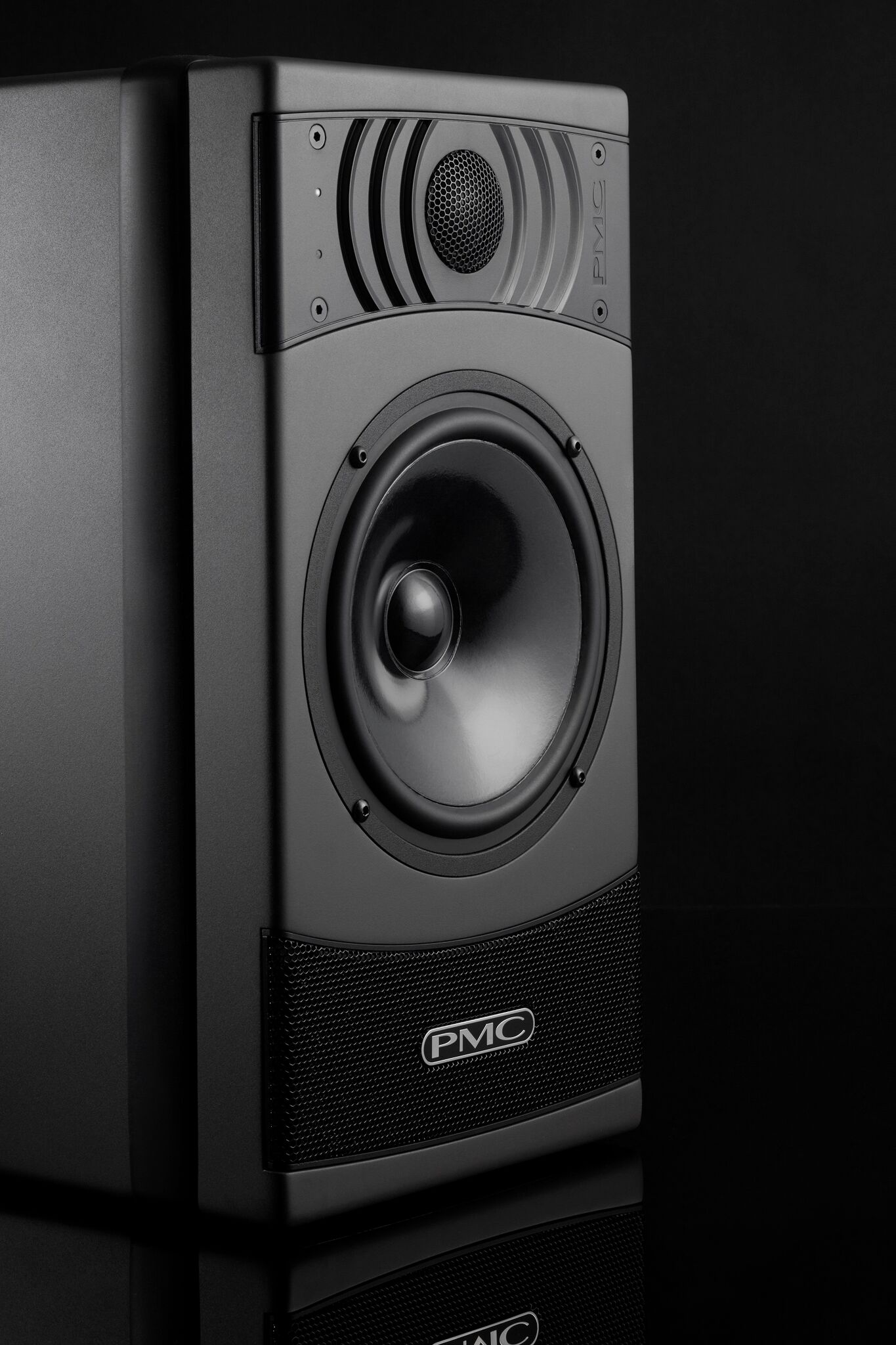
PMC result6
The result6 studio monitor from PMC features a two-way design with a 27mm soft-dome tweeter, dispersion grille, and a mid/bass unit composed of a doped natural fiber. The most affordable PMC yet, it features built-in dual Class-D amplifiers that supply 65W and 100W of power to the HF and LF drivers, respectively. A full-range, near- to mid-field active studio monitor, with a frequency response of 45 Hz to 22 kHz, the result6 has distinctive, finned HF driver surrounds known as D-Fins, which are said to widen the stereo sweet spot by delivering excellent off-axis response over a wider area. The D-Fins also eradicate the cabinet edge effects, ensuring high-frequency sound remains razor-sharp and unsmeared. The result6 also features the company’s renowned ATL bass-loading system, making it a true member of the PMC family.
Related:
• PMC Launches result6 Compact Nearfield Monitor at AES 2017, Oct. 18, 2017
• Basement Jaxx Get Everything They Need from PMC’s result6 Monitors, April 6, 2018

